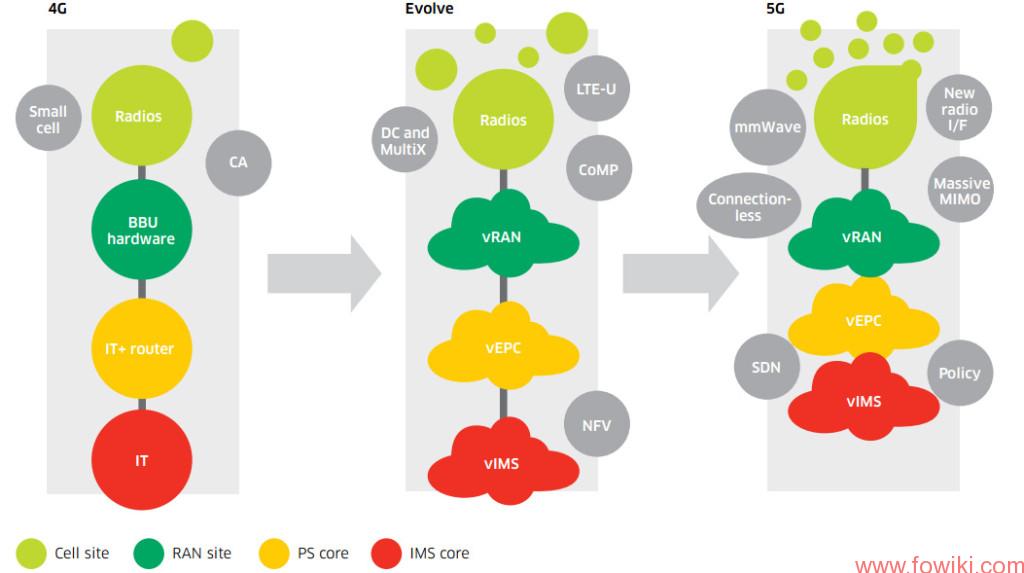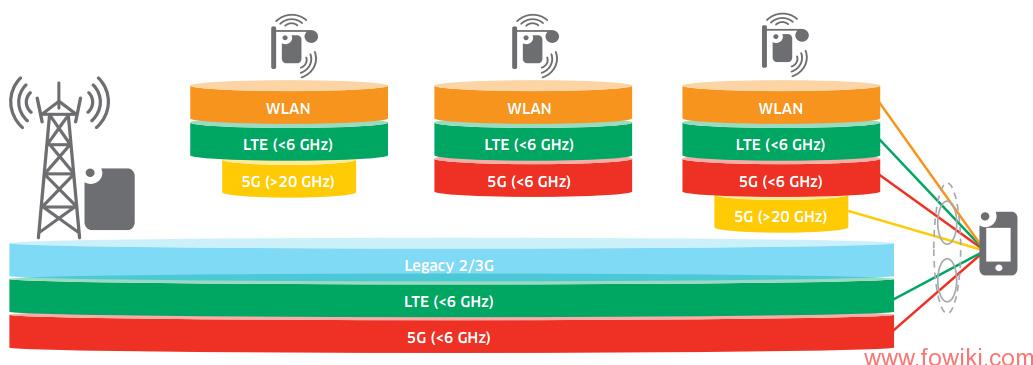What is 5G and what is driving it?
Simply stated, 5G is the “fth generation mobile networks or the next major cellular evolution after 4G. About every ten years, the next generation of mobile networks appears, with each generation improving upon the last. As with each new generation, 5G is expected to be more spectrally ef”cient, support many more users, offer higher data rates and provide a more consistent user experience. With the anticipated growth of IoT devices and connections, 5G is also expected to support much higher device connection densities, prolong device battery life, widen network coverage and make signaling more ef”cient.
Today, there are preliminary requirements for 5G developed by leading mobile operators working with the Next Generation Mobile Networks (NGMN) forum and the International Telecommunication Union-Radiocommunication (ITU-R) 2020 project, but it will be another year or two before these are “nalized. Key requirements along with some proposed target values are:
• Device connection densities up to 200,000 devices/km2
• Consistent user experience with bit rates of 0.1 to 1 Gb/s depending upon speci”c use case
• Peak bit rates of 10 to 50 Gb/s
• Latency reduced to as low as 1 ms for extreme cases
• Device autonomy to enable devices to last days, weeks, months or years without recharging
• Higher reliability and availability
• Mobility up to 500 km/hr
• Wider coverage
What will 5G networks look like?
Alcatel-Lucent views the 5G network as:
• Being service-driven
• Evolutionary in its development
• Using federated radio access mixing a new configurable and flexible 5G radio access technology with LTE and WLAN to deliver massive capacity
• Using programmable policy-based networking to adopt the network to the user
Service driven
Because of the many types of devices connecting to the network and the many uses of mobile broadband, 5G will have many new use cases –each with its own set of requirements. For example the use case, “Massive Internet of Things”, will require connectionless service provision, while a “Mission Critical” use case will require low latency and high reliability services. 5G will have to meet the requirements not only of each use case, but also of different types of terminals, radio environments, network loads as well as business and pricing models. This will result in a flexible set of customizable services that mobile operators can build into unique service offers.
Evolutionary
5G is expected to start being deployed in 2020. By then, most major operators will have completed the rollout of their LTE networks over multiple carriers mixing licensed and unlicensed spectrum tied together with carrier aggregation. HetNet solutions using dual connectivity to link the macro and small cell layers would also be in place and operators would have started deploying NFV and SDN based technologies enabling the introduction of new virtual RAN sites in major cities as well as a virtualized core network.

By 2020, the penetration of smart phones in developed markets will have stabilized. New connections will mostly be for second and third personal devices along with machines and sensors leading to a rise in short bursty traffic. This rise will burden the LTE network with increased signaling traffic.
At this point, ongoing capacity demands in dense urban areas and continued IoT traf”c growth will demand higher capacity and a more ef”cient and cost-effective solution than that offered by any further evolution of the LTE network. Additionally, operators will want to launch new revenue-generating services such as those outlined in NGMN 5G use cases. Taken together, these different triggers will encourage operators to deploy 5G radio technologies. Alcatel-Lucent expects their “rst step will be the deployment of a new 5G carrier on macro cells to act as a control layer and offer improved Quality of Service (QoS), higher capacity and reduced cost per delivered byte for a wide range of services including especially short packet bursts of IoT traffic.
As 5G is deployed, operators will also maintain access to their 4G LTE capacity by using carrier aggregation and dual connectivity between 5G and 4G carriers, minimize the need for inter-generational handovers. This represents a paradigm shift in the mobile industry as it will be the “rst time a new generation will be designed to reuse rather than replace the capacity of the previous generation. Figure 1 depicts how the 4G network will evolve to 5G.
Federated radio access
5G radio access will be federated. This means that low and high band 5G radio technologies will be combined with existing LTE and WLAN capacity using carrier aggregation and dual connectivity.

On the macro layer, low band 5G and 4G carriers will be used together. 5G devices will use a 5G carrier as their primary and connectionless service bearer and any other 5G or 4G carriers as secondary resources for connection-oriented service. Legacy 4G devices will continue to use LTE carriers.
On the small cell layer, a mixture of low and high band 5G carriers, 4G carriers and WLAN will be used together. 5G devices will use a low band carrier from either a macro cell, if available, or small cell for primary and connectionless service bearer and any other available low and high band 5G or 4G carriers and WLAN as secondary resources for connection-oriented service. Figure 2 shows how 5G low and high band carriers deployed across macro and small cells can be combined with LTE and WLAN to offer a federated access solution.

5G low band carriers are likely to be based on Universal Filtered -Orthogonal Frequency-Division Multiplexing (UF-OFDM), an extension of the Orthogonal Frequency-Division Multiplexing (OFDM) and Single Carrier Frequency Division Multiple Access (SC-FDMA) technology used by LTE. This extension uses an additional variable “lter stage in the transmitter, improving spectrum emission shaping and providing a #exible guard space between symbols. Working together, these two features offer higher performance and robustness than LTE, especially for narrow bandwidth transmissions typical of the short bursty transactions used by IoT services, messaging and device signaling while also enabling short transmission intervals to offer reduce latency bearers.
The technology used for 5G high band carriers will depend on the exact band adopted. If the ITU-R identi”es at least one band that is not too high then one option is to adopt the same scalable OFDM based technology as for low bands but with wider sub-carrier spacing and corresponding shorter sub-frame timing. This would offer native support for lower latency services and adapt well to the lower mobility and propagation delay spread that is associated with small cells access.
To ensure federated usage of the low and high bands between macro and small cell layers and between 5G, 4G and WLAN access, common upper layer procedures need to be adopted for both low and high bands as part of the 5G standard.
Programmable policy-based networking
In order to provide the flexibility to program the network to support the range of required 5G use cases, the 5G network requires a tighter coupling of wireless control, networking control and policy-based service management. This will be accomplished by using NFV and SDN to enable the 4G packet core, mobility controller (MME) and policy management functions (e.g. Policy and Charging Rules Function (PCRF) and Access Network Discovery and Selection Function (ANDSF)) to evolve into a truly flexible and configurable solution. Such a solution will allow operators to rapidly deploy innovative services and network solutions that are optimized to specific 5G use cases, environments, device types and end user needs.